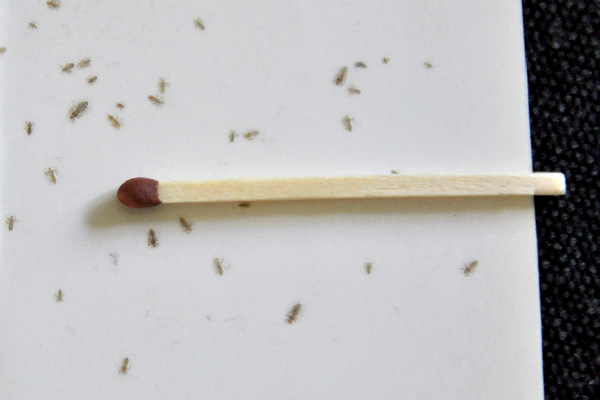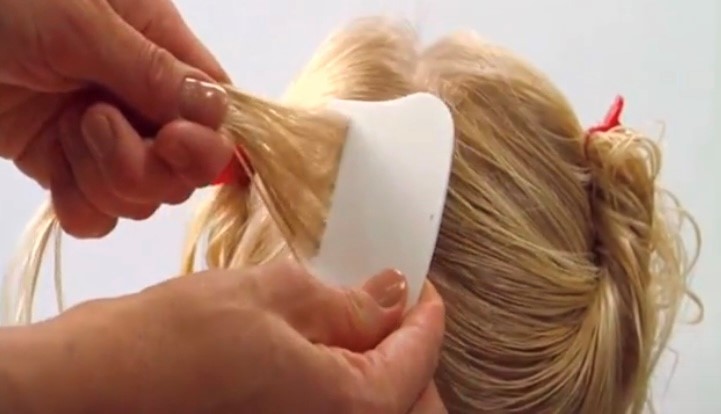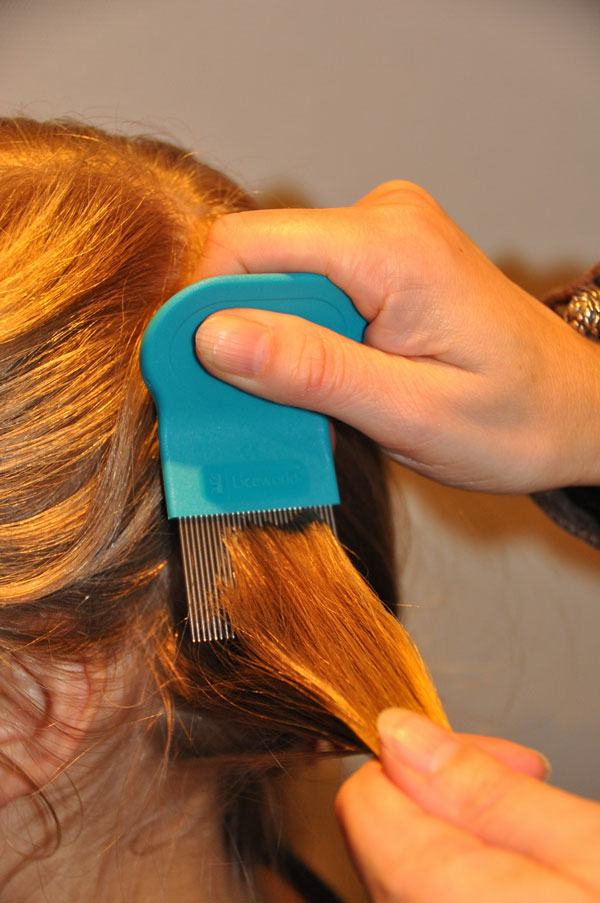How to Diagnose Head Lice: Identifying Lice Eggs, white Nits on Fingers and Scalp
Head lice are very tiny insects, measuring 0.08-0.12inch / 2-3mm, i.e. the size of a sesame seed. Thus, they are very hard to see with the naked eye, also because they move about the hair rather quickly. Only if you use a good head lice comb are you able to detect whether you have head lice or not.
The louse egg, white nits is easier to spot in the hair. The appearance of the louse egg varies from whitish to brownish. The egg is oval in shape and measures 0.03inch / 0.8mm. The eggs are glued to the hair and do not fall off even if you shake the strand of hair. The hatched eggs (called nits and white nits) are white and can be inches away from the scalp, as they grow away from the scalp as the hair grows.

Living and dead Lice and Nits
The nits do not fall off the hair by themselves, so if you want to remove the egg, you will have to remove the egg with your fingernails or use a special nit comb with very narrow distance between the teeth. Furthermore, research is being done for finding new products, which are able to loosen the eggs’ glue or colour the eggs, so they are easier to comb out of the hair.
Just because you find nits, it is not certain that you have live head lice. It can be difficult to determine whether the eggs you find on the strand of the hair are dead, alive or hatched. If you only see eggs and no live head lice, there is no need to start a treatment. However, it is important that you check the hair regularly during the next 14 days to watch for live head lice hatching from the eggs.
When you check for live head lice, it is not enough to search the hair with your fingers. The most efficient method is to use a proper head lice comb. It is four times more efficient and takes half the time.
The distance between the teeth of the comb must not exceed 0.008inch / 0.2mm. Otherwise it will not catch the smallest nymphs. At the same time, the distance between the teeth must be exactly the same between all the teeth. You will find many poor head lice combs on the market, which have never been tested if they can catch head lice at all. Ask your local pharmacy or drugstore which head lice comb to choose. You can see some examples of clinically proven head lice combs here.
Combing can be done in both dry and wet hair. However, studies have shown that if you carry only a few head lice (10 or less), you are more successful detecting them when conditioner is applied to the hair before combing. This prevents the head lice from moving around, thus making it easier to catch them with the head lice comb – and it also makes it considerably easier to comb the hair.
HOW TO CHECK FOR HEAD LICE AND LICE EGGS, WHITE NITS ON FINGER
Combing takes approximately 10 – 30 minutes, depending on the thickness and length of the hair.
Getting started:
- Place a towel around the shoulders
- Apply conditioner to the hair and comb or brush the hair thoroughly with an ordinary comb or brush
- Make sure you have a proper head lice comb (see above)
- Have white paper towel ready
- Daylight or good lighting
- A magnifying lens may be usefull to spot lice eggs on fingers or the comb.
HOW TO COMB FOR HEAD LICE
- Start combing in a parting in the middle in one side of the bangs right from the scalp
- Pull the head lice comb meticulously along the scalp and all the way out to the tip of the tuft of hair
- Wipe the head lice comb in the paper towel and check for head lice
- Repeat the combing of the next tuft a little further from the bangs – wipe the head lice comb
- Repeat all around the head and back again to make sure that all the hair has been combed thoroughly through, at least 3 times
Applying a conditioner before combing gives a 90% certainty of finding head lice, even if there are only a few head lice – 10 or less. However, the method does not give 100% certainty, so it is very important to repeat the process after a few days if you suspect an infestation.
Should you find live head lice, you must start a proper treatment programme with a head lice comb or a head lice product. Read more here.


